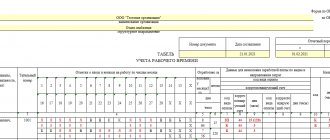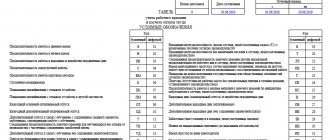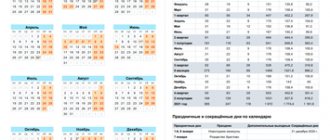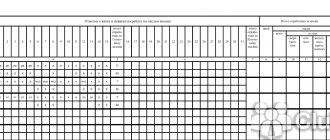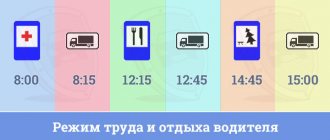In horizontal orientation
In vertical orientation
DOWNLOAD Production calendar for 2022 in horizontal orientation (PDF, 47 kb) Production calendar for 2022 in vertical orientation (PDF, 30 kb)
Calendar with 5-day week
Working time standards
Holidays and shortened days
Transfers of days off
Calendar with 6-day week
A production calendar is a document that defines working time standards, indicating weekends, holidays and pre-holiday days. Based on this data, work schedules are drawn up, including a document recording the actual time worked, the data of which at the end of the period determines the size of the salary. Our calendar is formatted in such a way that it is easy and understandable to navigate even for an inexperienced accountant or personnel officer.
Quarterly production calendar for 2022 with a 5-day week
31 – holiday
31 – pre-holiday day
31 – day off
31 – working day
Short version
I quarter 2022
| January | ||||||
| Mon | Tue | Wed | Thu | Fri | Sat | Sun |
| 26 | 27 | 28 | 29 | 30 | 31 | 1 |
| 2 | 3 | 4 | 5 | 6 | 7 | 8 |
| 9 | 10 | 11 | 12 | 13 | 14 | 15 |
| 16 | 17 | 18 | 19 | 20 | 21 | 22 |
| 23 | 24 | 25 | 26 | 27 | 28 | 29 |
| 30 | 31 | 1 | 2 | 3 | 4 | 5 |
| February | ||||||
| Mon | Tue | Wed | Thu | Fri | Sat | Sun |
| 30 | 31 | 1 | 2 | 3 | 4 | 5 |
| 6 | 7 | 8 | 9 | 10 | 11 | 12 |
| 13 | 14 | 15 | 16 | 17 | 18 | 19 |
| 20 | 21 | 22* | 23 | 24 | 25 | 26 |
| 27 | 28 | 1 | 2 | 3 | 4 | 5 |
| March | ||||||
| Mon | Tue | Wed | Thu | Fri | Sat | Sun |
| 27 | 28 | 1 | 2 | 3 | 4 | 5 |
| 6 | 7* | 8 | 9 | 10 | 11 | 12 |
| 13 | 14 | 15 | 16 | 17 | 18 | 19 |
| 20 | 21 | 22 | 23 | 24 | 25 | 26 |
| 27 | 28 | 29 | 30 | 31 | 1 | 2 |
| January | February | March | I quarter | |
| Number of days in the period | ||||
| Calendar | 31 | 28 | 31 | 90 |
| workers | 17 | 18 | 22 | 57 |
| Weekends | 14 | 10 | 9 | 33 |
| Number of working hours per week | ||||
| 40 hours | 136 | 143 | 175 | 454 |
| 36 hours | 122,4 | 128,6 | 157,4 | 408,4 |
| 24 hours | 81,6 | 85,4 | 104,6 | 271,6 |
II quarter 2022
| April | ||||||
| Mon | Tue | Wed | Thu | Fri | Sat | Sun |
| 27 | 28 | 29 | 30 | 31 | 1 | 2 |
| 3 | 4 | 5 | 6 | 7 | 8 | 9 |
| 10 | 11 | 12 | 13 | 14 | 15 | 16 |
| 17 | 18 | 19 | 20 | 21 | 22 | 23 |
| 24 | 25 | 26 | 27 | 28 | 29 | 30 |
| May | ||||||
| Mon | Tue | Wed | Thu | Fri | Sat | Sun |
| 1 | 2 | 3 | 4 | 5 | 6 | 7 |
| 8 | 9 | 10 | 11 | 12 | 13 | 14 |
| 15 | 16 | 17 | 18 | 19 | 20 | 21 |
| 22 | 23 | 24 | 25 | 26 | 27 | 28 |
| 29 | 30 | 31 | 1 | 2 | 3 | 4 |
| June | ||||||
| Mon | Tue | Wed | Thu | Fri | Sat | Sun |
| 29 | 30 | 31 | 1 | 2 | 3 | 4 |
| 5 | 6 | 7 | 8 | 9 | 10 | 11 |
| 12 | 13 | 14 | 15 | 16 | 17 | 18 |
| 19 | 20 | 21 | 22 | 23 | 24 | 25 |
| 26 | 27 | 28 | 29 | 30 | 1 | 2 |
| April | May | June | II quarter | I half of the year | |
| Number of days in the period | |||||
| Calendar | 30 | 31 | 30 | 91 | 181 |
| workers | 20 | 20 | 21 | 61 | 118 |
| Weekends | 10 | 11 | 9 | 30 | 63 |
| Number of working hours per week | |||||
| 40 hours | 160 | 160 | 168 | 488 | 942 |
| 36 hours | 144 | 144 | 151,2 | 439,2 | 847,6 |
| 24 hours | 96 | 96 | 100,8 | 292,8 | 564,4 |
III quarter 2022
| July | ||||||
| Mon | Tue | Wed | Thu | Fri | Sat | Sun |
| 26 | 27 | 28 | 29 | 30 | 1 | 2 |
| 3 | 4 | 5 | 6 | 7 | 8 | 9 |
| 10 | 11 | 12 | 13 | 14 | 15 | 16 |
| 17 | 18 | 19 | 20 | 21 | 22 | 23 |
| 24 | 25 | 26 | 27 | 28 | 29 | 30 |
| 31 | 1 | 2 | 3 | 4 | 5 | 6 |
| August | ||||||
| Mon | Tue | Wed | Thu | Fri | Sat | Sun |
| 31 | 1 | 2 | 3 | 4 | 5 | 6 |
| 7 | 8 | 9 | 10 | 11 | 12 | 13 |
| 14 | 15 | 16 | 17 | 18 | 19 | 20 |
| 21 | 22 | 23 | 24 | 25 | 26 | 27 |
| 28 | 29 | 30 | 31 | 1 | 2 | 3 |
| September | ||||||
| Mon | Tue | Wed | Thu | Fri | Sat | Sun |
| 28 | 29 | 30 | 31 | 1 | 2 | 3 |
| 4 | 5 | 6 | 7 | 8 | 9 | 10 |
| 11 | 12 | 13 | 14 | 15 | 16 | 17 |
| 18 | 19 | 20 | 21 | 22 | 23 | 24 |
| 25 | 26 | 27 | 28 | 29 | 30 | 1 |
| July | August | September | III quarter | 9 months | |
| Number of days in the period | |||||
| Calendar | 31 | 31 | 30 | 92 | 273 |
| workers | 21 | 23 | 21 | 65 | 183 |
| Weekends | 10 | 8 | 9 | 27 | 90 |
| Number of working hours per week | |||||
| 40 hours | 168 | 184 | 168 | 520 | 1462 |
| 36 hours | 151,2 | 165,6 | 151,2 | 468 | 1315,6 |
| 24 hours | 100,8 | 110,4 | 100,8 | 312 | 876,4 |
IV quarter 2022
| October | ||||||
| Mon | Tue | Wed | Thu | Fri | Sat | Sun |
| 25 | 26 | 27 | 28 | 29 | 30 | 1 |
| 2 | 3 | 4 | 5 | 6 | 7 | 8 |
| 9 | 10 | 11 | 12 | 13 | 14 | 15 |
| 16 | 17 | 18 | 19 | 20 | 21 | 22 |
| 23 | 24 | 25 | 26 | 27 | 28 | 29 |
| 30 | 31 | 1 | 2 | 3 | 4 | 5 |
| November | ||||||
| Mon | Tue | Wed | Thu | Fri | Sat | Sun |
| 30 | 31 | 1 | 2 | 3* | 4 | 5 |
| 6 | 7 | 8 | 9 | 10 | 11 | 12 |
| 13 | 14 | 15 | 16 | 17 | 18 | 19 |
| 20 | 21 | 22 | 23 | 24 | 25 | 26 |
| 27 | 28 | 29 | 30 | 1 | 2 | 3 |
| December | ||||||
| Mon | Tue | Wed | Thu | Fri | Sat | Sun |
| 27 | 28 | 29 | 30 | 1 | 2 | 3 |
| 4 | 5 | 6 | 7 | 8 | 9 | 10 |
| 11 | 12 | 13 | 14 | 15 | 16 | 17 |
| 18 | 19 | 20 | 21 | 22 | 23 | 24 |
| 25 | 26 | 27 | 28 | 29 | 30 | 31 |
| October | November | December | IV quarter | II half of the year | 2017 | |
| Number of days in the period | ||||||
| Calendar | 31 | 30 | 31 | 92 | 184 | 365 |
| workers | 22 | 21 | 21 | 64 | 129 | 247 |
| Weekends | 9 | 9 | 10 | 28 | 55 | 118 |
| Number of working hours per week | ||||||
| 40 hours | 176 | 167 | 168 | 511 | 1031 | 1973 |
| 36 hours | 158,4 | 150,2 | 151,2 | 459,8 | 927,8 | 1775,4 |
| 24 hours | 105,6 | 99,8 | 100,8 | 306,2 | 618,2 | 1182,6 |
Standard working hours according to the calendar
Working time standards involve calculating the number of working days, weekends and holidays, as well as the number of hours in a working week of different lengths.
This will help not only to correctly plan wage costs, but also to ensure proper efficiency of the work process, create a work schedule structure and prepare the implementation of the production plan. Quantitative data for months, quarters, half-years and for the year as a whole in a separate table:
| Month / Quarter / Year | Amount of days | Working hours per week | ||||
| Calendar | workers | Weekends | 40 hours | 36 hours | 24 hours | |
| January | 31 | 17 | 14 | 136 | 122,4 | 81,6 |
| February | 28 | 18 | 10 | 143 | 128,6 | 85,4 |
| March | 31 | 22 | 9 | 175 | 157,4 | 104,6 |
| 1st quarter | 90 | 57 | 33 | 454 | 408,4 | 271,6 |
| April | 30 | 20 | 10 | 160 | 144 | 96 |
| May | 31 | 20 | 11 | 160 | 144 | 96 |
| June | 30 | 21 | 9 | 168 | 151,2 | 100,8 |
| 2nd quarter | 91 | 61 | 30 | 488 | 439,2 | 292,8 |
| 1st half of the year | 181 | 118 | 63 | 942 | 847,6 | 564,4 |
| July | 31 | 21 | 10 | 168 | 151,2 | 100,8 |
| August | 31 | 23 | 8 | 184 | 165,6 | 110,4 |
| September | 30 | 21 | 9 | 168 | 151,2 | 100,8 |
| 3rd quarter | 92 | 65 | 27 | 520 | 468 | 312 |
| 9 months | 273 | 183 | 90 | 1462 | 1315,6 | 876,4 |
| October | 31 | 22 | 9 | 176 | 158,4 | 105,6 |
| November | 30 | 21 | 9 | 167 | 150,2 | 99,8 |
| December | 31 | 21 | 10 | 168 | 151,2 | 100,8 |
| 4th quarter | 92 | 64 | 28 | 511 | 459,8 | 306,2 |
| 2nd half | 184 | 129 | 55 | 1031 | 927,8 | 618,2 |
| 2017 | 365 | 247 | 118 | 1973 | 1775,4 | 1182,6 |
Working time standards for 2022 in the table
Below is a summary table of the number of calendar days, working days, weekends and the number of working hours for 40-, 36-, 24-hour work weeks by month, quarter, half-year and in general for the entire year 2022. Keep it for yourself.
| Period | Amount of days | Working hours per week | ||||
| Calendar | workers | Weekends | 40 hours | 36 hours | 24 hours | |
| January | 31 | 17 | 14 | 136 | 122,4 | 81,6 |
| February | 28 | 18 | 10 | 143 | 128,6 | 85,4 |
| March | 31 | 22 | 9 | 175 | 157,4 | 104,6 |
| 1st quarter | 90 | 57 | 33 | 454 | 408,4 | 271,6 |
| April | 30 | 20 | 10 | 160 | 144 | 96 |
| May | 31 | 20 | 11 | 160 | 144 | 96 |
| June | 30 | 21 | 9 | 168 | 151,2 | 100,8 |
| 2nd quarter | 91 | 61 | 30 | 488 | 439,2 | 292,8 |
| 1st half of the year | 181 | 118 | 63 | 942 | 847,6 | 564,4 |
| July | 31 | 21 | 10 | 168 | 151,2 | 100,8 |
| August | 31 | 23 | 8 | 184 | 165,6 | 110,4 |
| September | 30 | 21 | 9 | 168 | 151,2 | 100,8 |
| 3rd quarter | 92 | 65 | 27 | 520 | 468 | 312 |
| October | 31 | 22 | 9 | 176 | 158,4 | 105,6 |
| November | 30 | 21 | 9 | 167 | 150,2 | 99,8 |
| December | 31 | 21 | 10 | 168 | 151,2 | 100,8 |
| 4th quarter | 92 | 64 | 28 | 511 | 459,8 | 306,2 |
| 2nd half | 184 | 129 | 55 | 1031 | 927,8 | 618,2 |
| 2017 | 365 | 247 | 118 | 1973 | 1775,4 | 1182,6 |
FILES
Where and how are working time standards applied?
The standard working time is determined by the total number of hours that need to be worked over a certain calendar period.
This indicator is used to approve the operating mode of the enterprise. The standard was developed taking into account the adequate distribution of the workload on the employee, preventing the arbitrariness of the employer in terms of unauthorized increase in the number of working hours.
The Labor Code defines the duration of working hours - 40 hours per week for full-time employment (Article 91). Article 92 specifies the duration of a shortened working day for adolescents under 16 years of age, young people from 16 to 18 years of age, disabled people, hazardous workers and teachers.
The length of the working week for each category of citizens allows us to calculate the standard working hours for any month.
To do this, take the weekly norm of working hours, divide by 5 (the number of working days in a classic 5-day week), and then multiply by the sum of working days of a particular calendar month (total number of days minus weekends and holidays). The result is the standard working hours for the billing month.
Important! If there were holidays in the month, then it should be taken into account that the weekday preceding them is always 1 hour shorter than the standard working hours. Thus, from the number of days obtained by the specified formula, one more hour must be subtracted for each day preceding the holiday.
In this simple way, the number of hours that each employee must work to receive 100% of the salary is obtained. Based on the ratio of days actually worked to the standard for a particular month, the amount of wages is determined.
Working time standards are used to organize the work regime of workers of any profession. The production standard applied at manufacturing enterprises is, in fact, also a type of standardization of working time.
Production calendar for 2022
Will help the accountant and personnel officer
A production calendar is essential for every accountant and HR officer.
The production calendar contains information on the number of working days, weekends and holidays, as well as the standard working hours in 2022. The production calendar contains information about the number of working days and days off for each month and quarter. An accountant needs this information to correctly calculate wages, calculate sick leave and vacations, and draw up a work schedule. Employees will be able to choose a convenient period for vacation. In the calendar you can find out about all the holidays in 2022. According to Article 112 of the Labor Code of the Russian Federation, non-working holidays (weekends) in Russia are considered:
- January 1, 2, 3, 4, 5, 6 and 8 – New Year holidays;
- January 7 – Christmas;
- February 23 – Defender of the Fatherland Day;
- March 8 – International Women's Day;
- May 1 – Spring and Labor Day;
- May 9 – Victory Day;
- June 12 – Russia Day;
- November 4 is National Unity Day.
Hourly standards
Working time standards are regulated by government acts and orders of the Ministry of Health and Social Development of the Russian Federation.
The norm of work time for certain calendar periods is calculated according to a schedule that is developed for a standard working week, taking into account the average length of the working day. By standard we mean one in which there are five working days and 2 days off.
For example, a 40-hour work week implies an 8-hour work schedule (based on 40/5). The duration of the working day for 24-hour weekly activity (24/5) and 36-hour (36/5) is also subject to calculation.
This is how work time standards are calculated for a certain calendar period - month, quarter, half-year, year.
For example, working time standards for a certain period (month) are calculated as follows: weekly working hours (24-36-40) are divided by the number of days provided for in the enterprise schedule and multiplied by the total monthly number of working days in accordance with the calendar.
| Month Quarter Year | Amount of days | Working time (hour) | ||||
| Kalend | Slave | Out | 40 hours/week | 36 hours/week | 24 hours/week | |
| January | 31 | 16 | 15 | 128 | 115.2 | 76.8 |
| February | 28 | 19 | 9 | 151 | 135.8 | 90.2 |
| March | 31 | 22 | 9 | 175 | 157.4 | 104.6 |
| April | 30 | 20 | 10 | 160 | 144 | 96 |
| May | 31 | 21 | 10 | 167 | 150.2 | 99.8 |
| June | 30 | 21 | 9 | 168 | 151.2 | 100.8 |
| July | 31 | 21 | 10 | 168 | 151.2 | 100.8 |
| August | 31 | 23 | 8 | 184 | 165.6 | 110.4 |
| September | 30 | 21 | 9 | 168 | 151.2 | 100.8 |
| October | 31 | 22 | 9 | 176 | 158.4 | 105.6 |
| November | 30 | 21 | 9 | 167 | 150.2 | 99.8 |
| December | 31 | 21 | 10 | 168 | 151.2 | 100.8 |
| 1st quarter | 90 | 57 | 33 | 454 | 408.4 | 271.6 |
| 2nd quarter | 91 | 62 | 29 | 495 | 445.4 | 296.6 |
| 3rd quarter | 92 | 65 | 27 | 520 | 468 | 312 |
| 4th quarter | 92 | 64 | 28 | 511 | 459.8 | 306.2 |
| 2017 | 365 | 248 | 117 | 1980 | 1781.6 | 1186.4 |
Video production calendar in 2022
Holidays and shortened days according to the calendar
Below is a table from which it is clearly seen that in 2017 there will be several “long” weekends. We also note that a shortened working day involves reducing working time by 1 hour.
| Holidays | Holiday | Shortened days |
| January 1-6,8 | New Year holidays | |
| Jan. 7 | Nativity | |
| February 23-26 | Defender of the Fatherland Day | February 22 |
| March 8 | International Women's Day | March 7 |
| April 29 - May 1 | Labour Day | |
| May 6-9 | Victory Day | |
| June 10-12 | Russia Day | |
| November 4-6 | National Unity Day | the 3rd of November |
Non-working holidays and shortened days in 2022
The most important thing in any calendar is non-working days, holidays and weekends!
They are the ones we pay primary attention to when thinking about vacation; they are the ones who give us the message to prepare for family feasts, buy gifts and plan shopping trips. Below we publish a complete list of such days, and we hope that you have a good time! So, the main holidays in 2022:
| Holidays in 2022 | Name of the holiday | Days of rest |
| January 1-8 | New Year's and Christmas | 8 |
| February 23-26 | Defender of the Fatherland Day | 4 |
| March 8 | International Women's Day | 1 |
| April 29 - May 1 | Labour Day | 3 |
| May 6-9 | Victory Day (72nd anniversary) | 4 |
| June 10-12 | Russia Day | 3 |
| November 4-6 | National Unity Day | 3 |
Shortened pre-holiday days in 2022:
| Half-holiday | Before the holiday |
| February 22 | Defender of the Fatherland Day |
| March 7 | International Women's Day |
| the 3rd of November | National Unity Day |
Production calendarWeekend calendar (general)
Postponement of holidays in 2022
In 2022, January 1 and 7, as well as November 4, fall on weekends. Therefore the transfers will be as follows:
- From Sunday January 1st to Friday February 24th
- From Saturday January 7th to Monday May 8th
- From Saturday November 4th to Monday November 6th
This follows from the text of the Decree of the Government of the Russian Federation of August 4 No. 756 “On the transfer of days off in 2022” signed by D.A. Medvedev.
How and why are weekends postponed?
There are 14 official holidays in Russia. Every year the Government adopts another resolution on their transfer. Such an event is carried out in order to optimize the production calendar and avoid a “ragged” work schedule. There are a few simple transfer rules:
- If a holiday falls on a weekend, it is moved to the working day following that weekend.
- Working hours on the day preceding a holiday are reduced by 1 hour.
- In order for workers to be able to rationally use their rest days, weekends are sometimes transferred to weekdays. For the same reasons, it is allowed to transfer 2 days off during the New Year holidays to any other month.
If you are from the Republic of Tatarstan or Bashkortostan: Production calendar 2022 for the Republic of Tatarstan Production calendar 2022 for the Republic of Bashkortostan
Amount of working hours in 2017
When determining it, the following provisions should be taken into account:
- even if an employee works 5 or 6 days a week, Sunday is considered a day off;
- It is possible to reschedule a day off for individual specialists only if the company, for objective reasons, is unable to stop the work process for the weekend. That is, staff must perform their duties both on Saturday and on Sunday. This is stated in Article 111 of the Labor Code;
- Article 112 of the Labor Code of the Russian Federation contains a list of holidays upon the occurrence of which workers rest.
The Labor Code also includes the New Year holidays (from 01.01 to 08.01 inclusive) as holidays. Christmas is also classified as a holiday with a designated day off.
In addition, a holiday that falls on a weekend carries over such a day of rest. This principle works every year. The only exceptions are the first 8 days of January - New Year and Christmas. The fact is that the transfer of rest days to the New Year holidays does not automatically occur. Every year, the Government of the Russian Federation, in a separate procedure, approves the days when enterprise employees rest and do not go to work. This point is stipulated by part 5 of article 112 of the Labor Code of the Russian Federation.
Also see Holiday Reschedules in 2022.
According to the law (Part 1 of Article 95 of the Labor Code of the Russian Federation), the duration of the working day on the eve of an official holiday should be reduced by 1 hour.
All of the above requirements of the Labor Code of the Russian Federation, as well as taking into account the Procedure, are the basis for calculating working time for the calendar year. Speaking specifically and in numbers, the standard working hours for 2022 will be as follows:
| Working hours in 2022 | |
| Working hours per week | Working hours per year |
| 40 | 1973 |
| 36 | 1775.4 |
| 24 | 1182.6 |
Also see “Payment on holidays and weekends”.
Download calendar files for printing on a printer (A4 format)
Choose the most convenient format for printing your calendar:
DOWNLOAD CALENDAR FILES7 files
Download production calendar in JPG:
,
,
,
(on 4 pages) (on 4 pages)
Save it, it will come in handy:
Working hours calendar for 2016–2017
Guided by the procedure described above and government decrees “On postponing holidays” dated August 4, 2016 No. 756 (for 2022) and dated September 24, 2015 No. 1017 (for 2016), we calculated and tabulated labor standards for a 5-day working week.
In them you will find the number of working days and weekends for the specified years, as well as hourly standards for working weeks of different lengths (40, 36 and 24 hours). There are also aggregated data - based on the results of quarters, half-years, and years. They may be required if working hours are counted cumulatively.
So, labor standards for 2022 and 2016 are as follows:
Production calendar with a six-day work week
The law provides that some enterprises can establish a 6-day working week (Article 100 of the Labor Code of the Russian Federation). With this work schedule, the day off will be Sunday (Article 111 of the Labor Code of the Russian Federation). At the same time, the number of working hours on the eve of a day off cannot be more than 5 hours (Article 95 of the Labor Code of the Russian Federation). The limitation of 40 working hours with a 6-day working week remains (Article 91 of the Labor Code of the Russian Federation), therefore in practice the following scheme for distributing the number of hours by day of the week is often used, in the order from Monday to Saturday: 7+7+7+7+7 +5=40.
FILES
Where does the standard come from?
In principle, temporary labor standards can be calculated independently. The main thing that is required for the calculation is a holiday schedule for the accounting year, taking into account all holiday transfers and pre-holiday reductions.
According to the schedule, the number of working days in a month is determined, which is multiplied by 8 hours. This is for a typical 5 day 40 hour week. For weeks of shorter duration, you need to multiply by 7.2 and 4.8 - for 36 or 24 hours of work, respectively.
If there are pre-holiday days in a month that are subject to a reduction of 1 hour, all “cut off” hours must be subtracted from the result.
A specific calculation based on the example of January 2016 can be found in the article “What is the standard working time for January 2016?” .
That's all the calculations. It's not difficult at all. However, you will agree that using already calculated indicators is simpler and more convenient. Therefore, we offer a ready-made table of working time standards for 2016-2017 to download on our website.
Work schedules provided for by the Labor Code of the Russian Federation
The classic work process model provides for a 5-day work week with 2 days off and a working day of 8 hours. Not all enterprises can work according to this scheme, so there are other work schedule options:
- Irregular working hours. For employees who stay at work after the end of the working day or come to work before it starts. The Labor Code of the Russian Federation strictly defines the list of positions for which this is permissible.
- Shift work. Introduced in enterprises that operate longer than the maximum permissible daily work duration.
- Flexible schedule. Provides the ability to select the start time, end time and duration of the working day. The main thing is to develop the required hours per month and year.
- Fragmented workday. A working day with a break breaking it up into parts. In total, it cannot exceed the duration of daily work permitted by the Labor Code.
Important! In work schedules other than the classic five-day workday, the summarized accounting method is used. In this case, it is not the weekly standard that is taken into account, but the monthly or even annual one. The duration of working hours for the period, on average, must be equal to the duration of the working day permitted by the Labor Code.
Production calendar taking into account the standard working hours for 2022
You can often find a production calendar at enterprises or on the Internet, which takes into account all work shifts, holidays, weekends, changes in working hours, etc. (see figure below). It should be noted that such a calendar stands somewhat apart from the Labor Code and Procedure, since it does not have official recognition. It cannot be considered a normative act.
However, in practical use the calendar is very convenient, which is why it is often used. Accountants use it to calculate paid days (for example, on sick leave), and the HR department uses it to schedule employee vacations.
That is, such a calendar is compiled independently on the basis of a regular calendar, where weekends and holidays are indicated. It can be purchased at any bookstore before next year. Everything is laid out in detail in it based on the norms of the Labor Code of the Russian Federation and Government regulations. In such a calendar, the duration of working hours is prescribed for each day of this year. Of course, its size should be such that all the necessary notes fit.
An enterprise that calculates working hours for staff should carefully monitor annual changes in the calendar and the coincidence of holidays and weekends. It is also necessary to constantly review the news and not miss the appearance of changes or additions to labor legislation regulations that regulate working hours for any profession and/or category of workers.
Why do you need a production calendar?
Employees of HR departments and accounting departments cannot do without a production calendar. However, this document is also used by other employees of various companies and enterprises. So, to summarize, we can highlight why it is needed:
- Drawing up a work schedule. Using a production calendar allows you to take into account the number of weekends and working days in the month for which the schedule is being drawn up.
- Determination of the norm of working time for each period. The specifics of calculating this indicator will be discussed below.
- Calculation of wages, vacation and sick leave benefits. Based on the working time sheet at the end of the period, the ratio of actually worked time to planned time is determined. The resulting values help calculate the amount of monthly payments and bonuses.
- Vacation planning. Employees, having familiarized themselves with the production calendar, can choose the best time for vacation, determine the dates of short-term trips, and purchase tickets and vouchers in advance.
Other NRVs for 2022 in Russia
In practice, accounting and human resources departments need additional data on working time standards for 2022. The information will be more complete if you know that in 2022, with a 40-hour work week:
- total number of working days – 247;
- weekends and holidays – 118 days;
- shortened days – 3.
| Quarterly working time table in 2017 | ||
| Quarter | Working days | Working hours |
| 1st | 57 | 520 |
| II | 61 | 488 |
| III | 65 | 520 |
| IV | 64 | 511 |
Also see "Non-working holidays 2022".
What does the working time balance look like for 2022?
To streamline working time and determine the effectiveness of its use, some organizations draw up a balance of working time, formed taking into account the norms of the Labor Code of the Russian Federation.
It should be noted that at the legislative level, employers are not required to compile it, and the frequency of its formation is not indicated. Thus, the preparation of this balance is actually an element of statistical analysis of an organization that is interested in increasing the efficiency of using working hours resources.
The working time balance contains the following indicators:
- number of calendar days;
- working days according to law (excluding weekends and holidays);
- absences due to vacation, illness, or other valid reasons;
- loss of working time associated with downtime and absenteeism.
We recommend that you pay attention to the article “How to properly register absenteeism for an employee under the Labor Code of the Russian Federation?” .
In order to determine how effectively time resources are used, a normative (planned) balance and an actual balance are drawn up, the deviation of which from the norm indicates the effectiveness or ineffectiveness of the use of working time.
Let's consider the application of the balance sheet in 2022 for an organization working on a five-day basis (8-hour working day), with 2 employees.
Forecast balance
| Employee | Calendar days | Working days and hours according to law | No-shows | Lost working time | Useful working time fund | |||||||||||||||
| FULL NAME. | Job title | Days | Watch | Days | Watch | Days | Watch | Days | Watch | |||||||||||
| Ivanov N.V. | Accountant | 365 | 247 | 1 973 | 28 | 224 | 0 | 0 | 219 | 1 749 | ||||||||||
| Martov K.U. | Lawyer | 365 | 247 | 1 973 | 38 | 304 | 0 | 0 | 209 | 1 669 | ||||||||||
Let's reveal the information from the table. To determine efficiency, we calculated the indicator of useful working time based on the following indicators:
- 365 days – the number of calendar days in 2022.
- 247 days (247 days × 8 hours – 3 hours (due to shortened pre-holiday working days) = 1,973 hours) – the number of working days (hours) in a year according to the production calendar.
- 28 days (224 hours = 28 days × 8 hours) – the number of days (hours) of Ivanov’s absences, which correspond to the days of annual paid leave planned for 2022 according to the vacation schedule.
- 38 days (304 hours = 38 days × 8 hours) consists of 28 days of vacation (2022 vacation schedule) of Martov and 10 days (average number of absences due to illness).
Actual balance
| Employee | Calendar days | Working days according to law | No-shows | Lost working time | Useful working time fund | |||||||||||||
| FULL NAME | Job title | Days | Watch | Days | Watch | Days | Watch | Days | Watch | |||||||||
| Ivanov N.V. | Accountant | 365 | 247 | 1973 | 30 | 240 | 0 | 0 | 217 | 1733 | ||||||||
| Martov K.U. | Lawyer | 365 | 247 | 1973 | 33 | 264 | 5 | 5 | 209 | 1704 | ||||||||
- 365 days – the number of calendar days in 2022.
- 247 days (1,973 hours) – the number of working days (hours) in a year according to the production calendar.
- 30 days (240 hours = 30 days × 8 hours) - the number of days (hours) of Ivanov’s absences, which correspond to 28 days of annual paid leave taken in 2015 in total with 2 days of illness.
- 33 days (264 hours = 33 days × 8 hours) consist of 28 days of Martov’s vacation and 5 days of sick leave.
- 5 days (5 hours = 5 days × 1 hour) – Martov is 1 hour late for 5 days.
Let's compare the values of the forecast balance and actual
| Employee | 2017 (planned) | 2017 (actual) | Deviations | |||||||||||||
| FULL NAME. | Job title | Days | Watch | Days | Watch | Days | Watch | |||||||||
| Ivanov N.V. | Accountant | 219 | 1 749 | 217 | 1733 | –2 | –16 | |||||||||
| Martov K.U. | Lawyer | 209 | 1 669 | 209 | 1704 | 0 | 35 | |||||||||
As can be seen from the data presented, the forecast values overestimated the working time resources of N.V. Ivanov, and due to the excess of planned absences, the forecast efficiency of using working time was underestimated. The actual values according to K.U. Martov, on the contrary, confirm the effectiveness of the distribution of his working time.
Notes on the 2022 production calendar
According to Article 112 of the Labor Code of the Russian Federation, non-working holidays in the production calendar for 2022 are:
- January 1, 2, 3, 4, 5, 6 and 8 - New Year holidays ;
- January 7 - Nativity of Christ ;
- February 23 - Defender of the Fatherland Day ;
- March 8 - International Women's Day ;
- May 1 - Spring and Labor Day ;
- May 9 - Victory Day ;
- June 12 - Russia Day ;
- November 4 is National Unity Day .
If a day off coincides with a non-working holiday, the day off is transferred to the next working day after the holiday, with the exception of weekends coinciding with non-working holidays in the period from January 1 to January 8. The Government of the Russian Federation transfers two days off from the number of days off that coincide with non-working holidays, from January 1 to January 8, to other days in the next calendar year in the manner established by part five of this article.
In accordance with the production calendar for 2017, the New Year holidays will last 9 days, the first working day will be January 9. In February 2022, Russians will also have four days off in a row: from February 23 to 26. In March, Russians will rest on Wednesday, March 8. A pleasant surprise awaits Russians during the May holidays: four days off in a row - from May 6 to May 9 inclusive, and in May there will be a week with three non-working days: from April 29 to May 1. In June, you will also be able to relax for three days in a row - June 10, 11 and 12. In November, Russians also expect three days off in a row - November 4, 5 and 6, and November 3 will also be a short day. The last day of 2022 will be Sunday, which will allow Russians to be much better prepared for the New Year celebrations.
For the purpose of rational use by employees of weekends and non-working holidays, weekends may be transferred to other days by federal law or a regulatory legal act of the Government of the Russian Federation. In this case, the regulatory legal act of the Government of the Russian Federation on the transfer of days off to other days in the next calendar year is subject to official publication no later than a month before the start of the corresponding calendar year. The adoption of regulatory legal acts of the Government of the Russian Federation on the transfer of days off to other days during the calendar year is permitted subject to the official publication of these acts no later than two months before the calendar date of the established day off.
Download production calendar for 2022
Production calendar for 2022 . PDF format, print version in A4, A3, A2 formats, optimal for black and white printer Production calendar for 2017 . PDF format, printable version in A4, A3, A2 formats, optimal for a color printer Production timesheet-calendar for 2022 . PDF format, printable version in A4, A3, A2 formats, optimal for a black and white printer Production timesheet and calendar for 2022 . PDF format, print version in A4, A3, A2 formats, optimal for color printer Production calendar. Especially for Android. Free application Calendar code for your website or blog Calendar code for the forum
How to calculate the working time balance for 2017
The working time balances discussed above were calculated for each employee. In practice, the balance can be formed as a whole for the entire organization without such detail.
Let's look at the working time balance for 2017 .
| Period | Calendar days | Calendar days without holidays | Workers | |||||
| Days | Watch | |||||||
| January | 31 | 23 | 17 | 136 | ||||
| February | 28 | 27 | 18 | 143 | ||||
| March | 31 | 30 | 22 | 175 | ||||
| April | 30 | 30 | 20 | 160 | ||||
| May | 31 | 29 | 20 | 160 | ||||
| June | 30 | 29 | 21 | 168 | ||||
| July | 31 | 31 | 21 | 168 | ||||
| August | 31 | 31 | 23 | 184 | ||||
| September | 30 | 30 | 21 | 168 | ||||
| October | 31 | 31 | 22 | 176 | ||||
| November | 30 | 29 | 21 | 167 | ||||
| December | 31 | 31 | 21 | 168 | ||||
| Days (hours) per year | 365 | 351 | 247 | 1 973 | ||||
| On average per month | 29,3 | 20,6 | 164,4 | |||||
The balance sheet shows that with a 40-hour work week, on average, employees must work 20.6 days per month, or 164.4 hours. At the same time, the average number of calendar days per month is 29.3.
These indicators are not very informative for obtaining a complete picture of the efficiency of using working time, however, they can be used to calculate the forecast values of vacation pay, sick leave and other payments to employees.
Read more about calculating benefits, compensation and other payments to employees in our publication “How to calculate the average monthly salary (formula)? "

